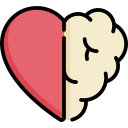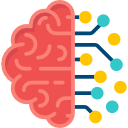New patients

First Assessment
We aim to uncover the root causes beneath your symptoms, so that we can work towards true healing and transformation.

Analizing Results
We discuss the results of your brain mapping to see exaclty what areas of the brain and what activity we want to improve.

Custom Plans
We create a personalized plan to help you achieve your goals combining neurointegration technology and psychology to help individuals achieve real transformation.
Learn about our Process at Brain Coach LLC., and how it works.
We are focused on addressing the cause of the challenges that individuals face to create solutions that last and are sustainable. Dr. Sunita is well known for using the latest research in these fields to help the individual to create a life that has a purpose and calling. .
We combine Neuroscience, Psychotherapy, Coaching, Neurofeedback, and Counselling to create a highly individualised, encompassing and empowering approach to your healing and transformation
Through detailed consultations and speciality lab work, we search for root causes of your symptoms, and overlooked keys to your recovery creating the right plan for YOUR individual needs.
As your partners in recovery, we will follow the plan together, measuring results and focusing on progress.
What is Neurofeedback?
Neurofeedback is direct training of brain function, by which the brain learns to function more efficiently. We observe the brain in action from moment to moment. We show that information back to the person. And we reward the brain for changing its own activity to more appropriate patterns. This is a gradual learning process. It applies to any aspect of brain function that we can measure. Neurofeedback is also called EEG Biofeedback, because it is based on electrical brain activity, the electroencephalogram, or EEG. Neurofeedback is training in self-regulation. It is simply biofeedback applied to the brain directly. Self-regulation is a necessary part of good brain function. Self-regulation training allows the system (the central nervous system) to function better.
Neurofeedback addresses problems of brain dysregulation. These happen to be numerous. They include the anxiety-depression spectrum, attention deficits, behavior disorders, various sleep disorders, headaches and migraines, PMS and emotional disturbances. It is also useful for organic brain conditions such as seizures, the autism spectrum, and cerebral palsy.
How Does it Work?
We apply electrodes to the scalp to listen in on brainwave activity. We process the signal by computer, and we extract information about certain key brainwave frequencies. (All brainwave frequencies are equal, but some are more equal than others…) We show the ebb and flow of this activity back to the person, who attempts to change the activity level. Some frequencies we wish to promote. Others we wish to diminish. We present this information to the person in the form of a video game.
The person is effectively playing the video game with his or her brain. Eventually the brainwave activity is “shaped” toward more desirable, more regulated performance. The frequencies we target, and the specific locations on the scalp where we listen in on the brain, are specific to the conditions we are trying to address, and specific to the individual.
What Conditions Can It Help?
We are especially concerned with the more “intractable” brain-based problems of childhood whose needs are not currently being met. This includes, Seizures and sub-clinical seizure activity, severely disruptive behavior disorders such as Conduct Disorder and Bipolar Disorder, Autistic spectrum and pervasive developmental delay, Cerebral palsy, acquired brain injury, Birth trauma.
Many children have sleep problems that can be helped such as Bed wetting, Sleep walking, sleep talking, Teeth grinding, Nightmares, Night terrors.
We can also be helpful with many of the problems of adolescence including Drug abuse, Suicidal behavior, Anxiety, and depression.
We can also help to maintain good brain function as people get older. The good news is that almost any brain, regardless of its level of function, can be trained to function better.
Behavior
While medication and behavioral interventions can do a good job treating the symptoms of children with ADD or ADHD, neurofeedback retrains the brain to regain better control and focus. This method is about building up the person, focused on the qualities they possess.
Stress & Anxiety
Anxiety is a common response to stress, and sufferers often feel overwhelmed, exhausted, and fatigued. Neurofeedback can help guide your brain to change how it responds to stimuli that disturb our physical or mental equilibrium.
Peak Performance
Concentration, focus, and emotional control are key to achieving optimal performance in all fields. Athletes and business executives are taking advantage of neurofeedback technologies to learn how to utilize the full potential of their minds to reach their peak.
How Neurofeedback Works
Discover for yourself whether neurofeedback training is the right choice for you or a member of your family.
Learn how neurofeedback training works: effectively and permanently, with no pain, no invasive treatments, no drugs, and absolutely no side effects. See how these programs can be used to improve specific conditions or to optimize your personal performance.
Frequently asked questions about Neurofeedback?
What is Neurofeedback?
How effective is it?
Is Neurofeedback safe?
Yes, neurofeedback is completely painless, non-invasive, and safe. In the same way that muscles strengthen after use, neurofeedback strengthens neural-pathways with specifically tailored exercises. It is simply a learning technique.
In the 40-year history of neurofeedback, nobody has ever been harmed. However, as with any form of exercise, there can be ‘side-effects’. See the side effects questions below.
